Behaviorist Approach
Published on July 28th, 2020
Updated on January 2nd, 2024

Contents
The behaviorist approach is an observational approach to psychology. In the behaviorist approach, observation is used to understand the human condition. It utilizes the observation of behavior to understand people’s minds.
Unlike other approaches, the behaviorist approach does not consider thoughts and emotions. It focuses on observable behaviors in others. Researchers focus on the method of learning behaviors and interactions with one’s environment. Behaviorists use observational studies to learn about human behavior. They conduct experiments that observe subjects in a controlled environment.
Sponsored by

Choose a therapist to work with and start healing with 20% off from BetterHelp.
Click HereAccording to behaviorists, human behavior develops as a result of a ‘stimulus-response association’. This means that people learn through reacting to a stimulus. They learn from the interaction between the stimulus and response. Through trials, humans learn the results of their behavior, and how to interact with external stimuli in the environment. Repeated trials are often observed as a method of learning how to behave in response to environmental factors.
The understanding of the stimulus-response association derives from the work of famous behaviorists. These behaviorists conducted studies that created the foundation for the behaviorist approach. Researchers who are known for their contributions to the behaviorist approach include:
- Dr. Ivan Pavlov
- Dr. John B. Watson
- Dr. E.L. Thorndike
- Dr. B.F. Skinner
- Dr. Albert Bandura
Classical Conditioning
One of the two forms of conditioning is classical conditioning. With classical conditioning, a person develops behaviors in response to stimulation. This learning process is repetitive. It suggests that the more a person is presented with a stimulus, the more likely it is that the stimulus will elicit a response.
Classical condition was introduced by Ivan Pavlov. Pavlov was a physiologist who discovered classical conditioning by accident. He did so while performing experiments on his dog. This experiment is commonly known as Pavlov’s Dog experiments.
Pavlov’s Dog
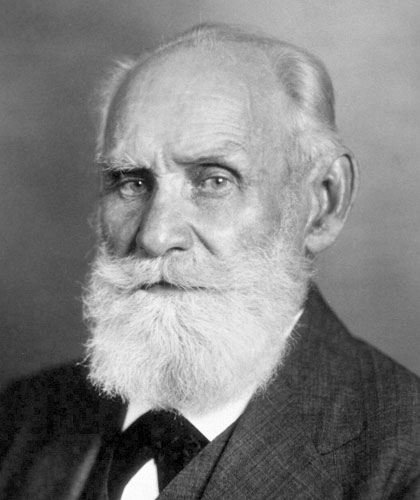
Dr Ivan Pavlov discovered classical conditioning by accident. While studying a dog’s digestive system he observed a repeated behavior in his dog. Every time the dog heard the exam room door open, he would start to salivate. This is because every time Pavlov entered the room, he was carrying dog food with him.
Through observation, Pavlov realized the dog would associate the door opening with food. This is because every time the door opened, it would be fed. Pavlov decided to change his experimental design to assess the learning behavior of the dog.
Pavlov’s new experimental design was as follows:
The dog is presented with food. At the same time, Pavlov rings a bell. In anticipation of getting fed, the dog would salivate. Pavlov continues to ring a bell at the same time as feeding the dog. The dog continues to salivate in response. Eventually, Pavlov rings the bell without any food. The response was the dog begins to salivate. This is because the dog learned to associate the sound of the bell with food. It thought every time it heard the bell it would be fed.

The results of Pavlov’s study support that an animal (and human) can be conditioned to behave a certain way. In this case, the dog was taught to expect food when it heard the bell. The dog’s response would be salivation.
Little Albert
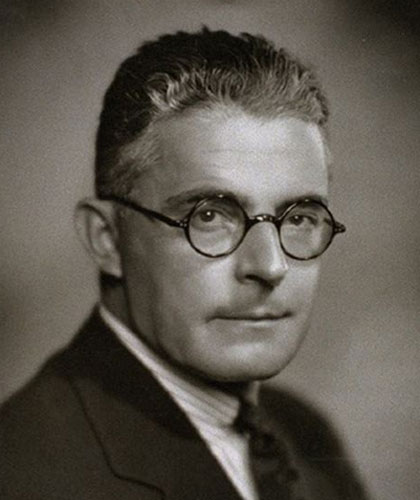
The work of Dr. Pavlov inspired the experiment of Little Albert. The Little Albert experiment was performed by Dr. John B. Watson. John B. Watson was a psychologist who contributed to the research on classical conditioning. Watson reviewed Pavlov’s research and applied it to human behavior. The Little Albert study confirmed the concept of classical conditioning.
The Little Albert study displayed how the environment plays into learned behavior for humans. In this study, a toddler named Albert was conditioned to fear a white rat. Watson did so by playing a loud, rattling sound at the same time as presenting Albert with a white rat. The repetition of this study conditioned Albert to expect a loud noise when he saw the rat. As a result, Albert developed a fear of white rats. The results of this study support that humans learn through classical conditioning. It also provided evidence that humans can be conditioned to have certain responses to stimuli.
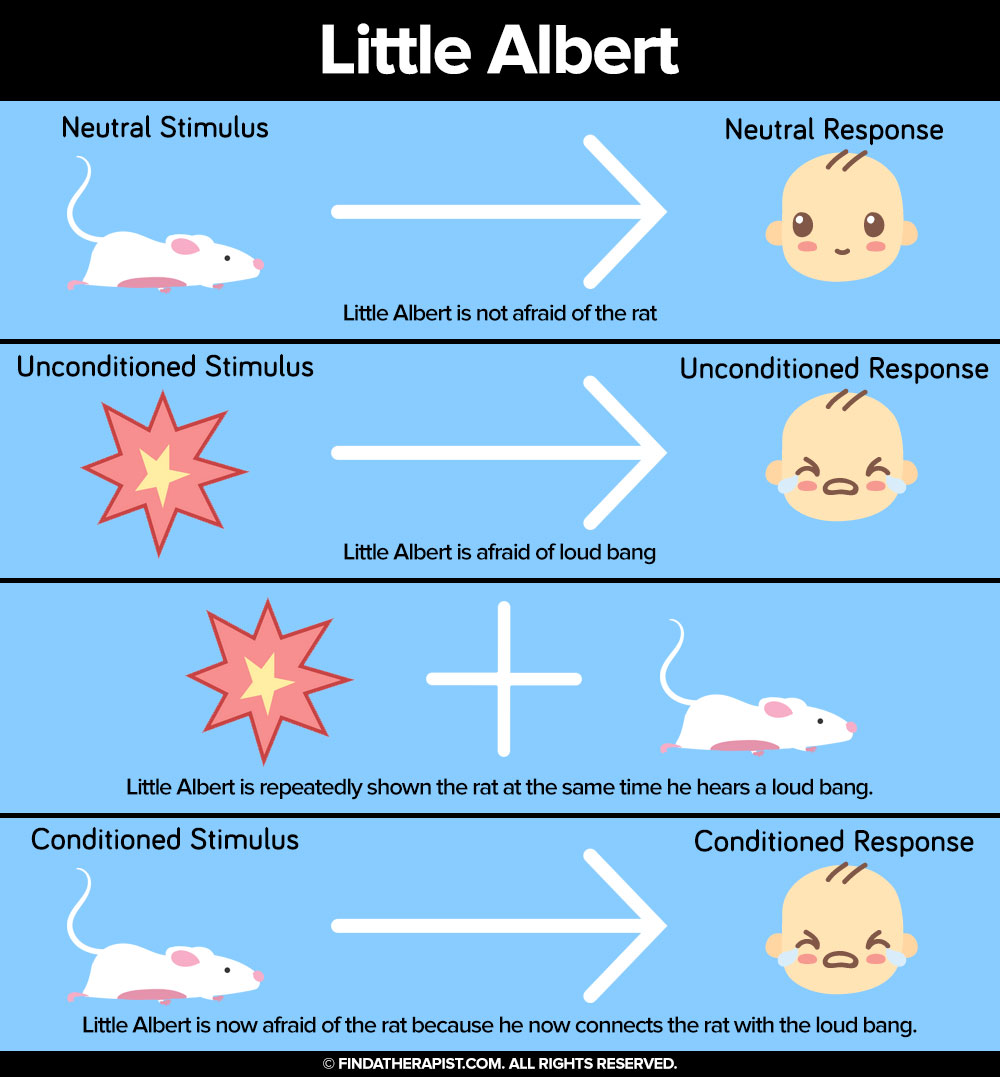
Operant Conditioning
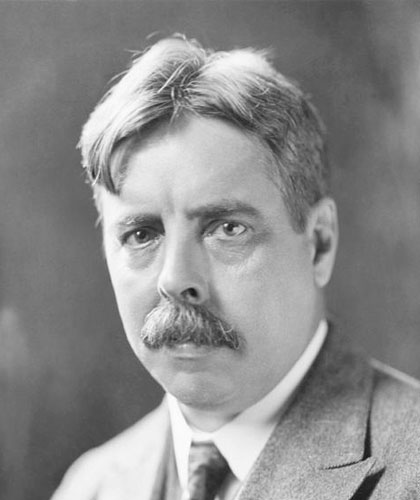
Operant conditioning is a second concept of conditioning. It is used to organize a process of learning through reinforcement and punishment. The concept of operant conditioning was developed by B.F. Skinner. Skinner used concepts of E.L. Thorndike and John B. Watson in his own research on observable behaviors.
Skinner’s research involved observing subjects in a controlled environment. His focus was on how subjects behave in reaction to stimuli in their immediate space. Skinner believed that behavior depends on a person’s environment and the rules of social construct.
Skinner used the law of effect as a guide for his research. The law of effect was developed by E.L. Thorndike. It is a law that states behaviors with positive outcomes are more likely to be repeated. Behaviors that have negative outcomes are not likely to be repeated.
Keeping this in mind, Skinner incorporated reinforcers and punishers into his experimenters. He observed how subjects responded to each stimulus. The results supported that reinforcers increase chances of a behavior repeating, and punishers decrease chances of a behavior repeating.
Skinner Box
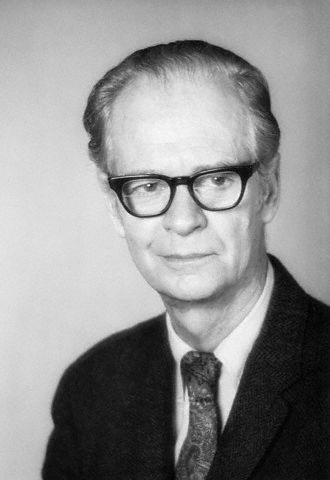
The Skinner box is the experiment used in B.F. Skinner’s research. He used the Skinner box to observe rats undergoing operant conditioning. The box allowed for Skinner to observe the rat’s behavior in response to reward.
In the box, when the rat hits a lever, he is rewarded with food. At first, the rat hits the lever by accident. When the rat sees that food is given after the lever is hit, it hits the lever again. After several successful attempts of receiving food by hitting the lever, the rat understands if it hits the lever, it gets food. The behavior of hitting the lever is reinforced by the reward of food.
Social Learning Theory
The social learning theory was developed by Dr. Albert Bandura. Albert Bandura was a psychologist who focused on social learning. Bandura believed that learning occurs through the observation of others.
Bandura is most well-known for his theory of social learning and his Bobo doll experiment. He believed that modeling and imitation are driving forces behind social learning. Social learning provides a standard for behavior. It teaches others how to behave through example. Whether or not the learned behavior is ‘good’ or favorable, people can learn how to behave through observing other people.
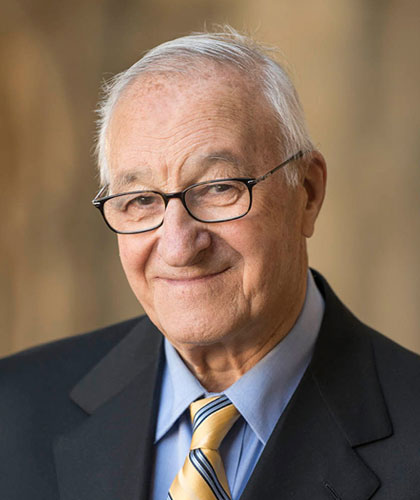
Observational Learning
Observational learning is learning that occurs through observing others. Each person models behaviors for other people. Whether they intend to or not, People display different behaviors for other people each day. This happens through catching a person’s attention with their own behavior. If an observer is interested in another person’s behavior, they will pay attention to it. Then, they may remember the behavior and use the behavior themselves in the future. If they do not find the behavior to be attractive in some way, they will discard it and move on. If they do find the behavior attractive, they will recreate it in their own lives.
According to Bandura, there are key methods of observational learning. These methods explain how social learning occurs through observation. While the methods were constructed around children, they can be generalized to working on adolescents and adults as well.
The methods include:
Shaping
Shaping is the process of modifying behavior through reward. When a person wants to see a child’s behavior modified, they will instruct the child how to behave. Then, when the child successfully followed the instruction, they will receive a reward.
Vicarious Reinforcement
Vicarious reinforcement happens when a child sees another child being rewarded for their behavior. If a child observes another child receive a desired response from a behavior, they will copy the behavior to receive the same response.
Modeling and Imitation
Modeling and imitation refer to a child’s tendency to learn from the behavior that adults model. This means that a child is likely to see an adult behaving one way, and act in a similar way themselves. This trend was discovered through the Bobo doll experiment.
Bobo Doll Study

The Bobo doll study was an experiment that supports the concept of modeling and imitation in the social learning theory.
In this study, children observed adults interacting with a Bobo doll. The sample of children who watched adults act aggressively toward the doll imitated the behavior. When exposed to the doll, the children would act aggressively toward it.
Similarly, children who observed adults act non-aggressively toward the doll did the same. Children who did not have a model did not show a significant reaction to the Bobo doll.
This experiment supports the concept of modeling and imitation. It shows how the behavior of children depends on the model of behavior they are presented with. They learned how to treat the Bobo doll through how adults treated the Bobo doll.
Sponsored by

Find an affordable therapist online with 20% off from BetterHelp.
Click Here






Leave A Reply